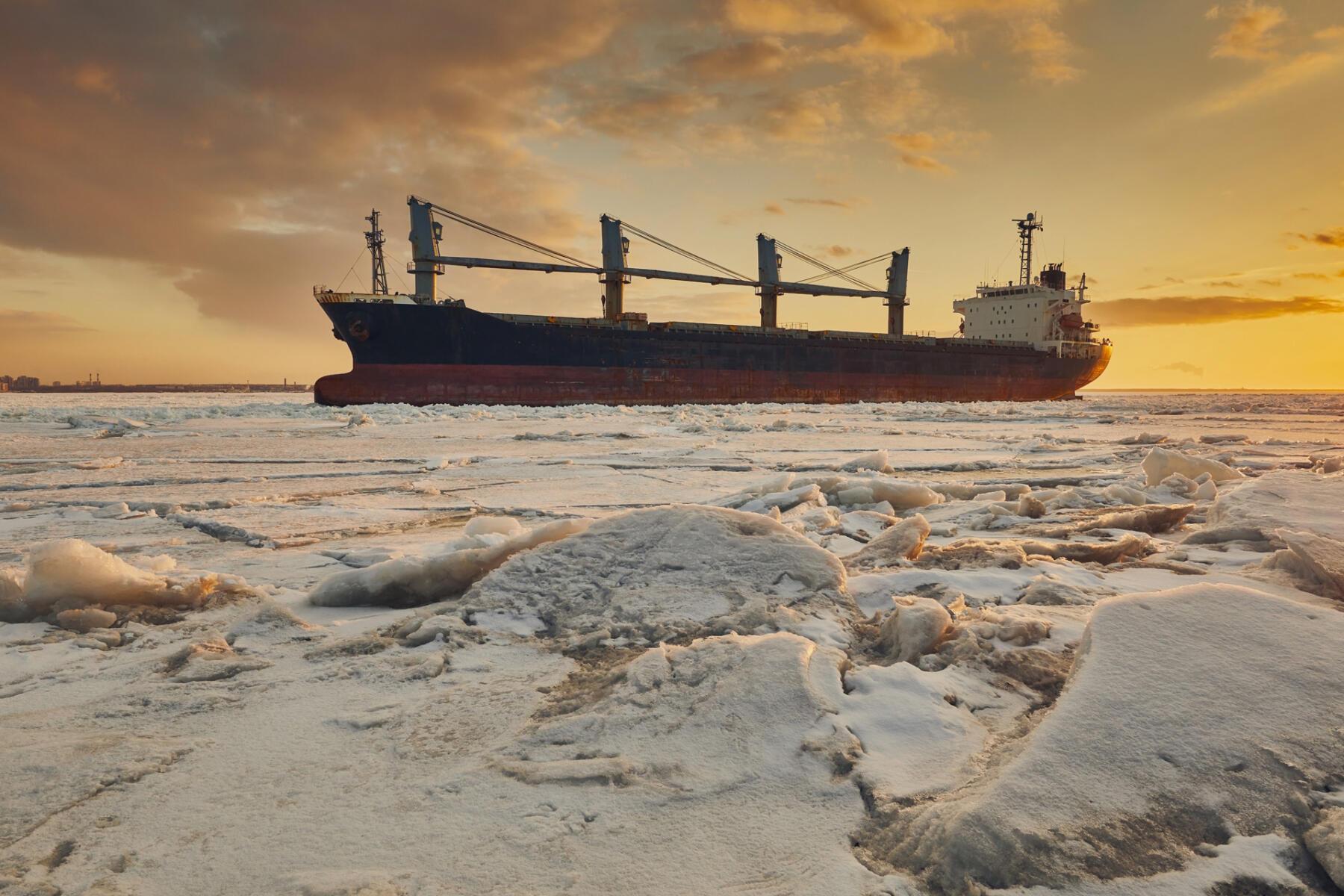Main Types – Repairs – Implications to Underwriters
According to our database and discussions with clients and colleagues, ice damages have been a rising trend within the winter of 2023-2024 compared to previous years, especially in the Baltic Sea, which has been largely covered by ice.
2024 began with the early arrival of winter in norther Europe. In reality the first cold spell started in late November 2023, which cooled down the sea temperature, followed by the next cold sweep which began at the turn of the year.
According to the Finnish Meteorological Institute (FMI) reports, the overall ice extent in the Baltic Sea in early January 2024 was four times the average, however, the maximum sea ice extent in the Baltic Sea (sq. km) barely exceeded the average by February 2023.
Despite the fact that the coverage of the Baltic Sea was in essence “normal”, key ports within the Baltic were heavily covered by packed ice this winter, resulting in several similar claims from ice damages sustained by vessels operating in the region.
The other location that brings rise to several ice damage claims are the ports of northern Canada, near the arctic route. The remote location and heavy ice pack concentration in these ports are responsible for multiple occasions of ballast structural damages.
Main Types of Ice Damages
There are two main types of Ice Damages, we have encountered recently, that gave rise to H&M and/or LOH insurance claims:
- Propeller Damage
- Structural damage (fwd)
Propeller Damage
This is one of the most usual types of damage that arises due to contact with thick ice formations. It is typical that vessels in ballast condition entering / departing from ports or even during shifting within the port, suffer damages of varying nature/extent or severity in way of propeller blades, due to practically unavoidable contact with thick ice.
Damage: The nature of these damages is typical and distinct, in most cases compatible or symmetrical on all blades, consisting of blade tips bent in a similar uniform manner, by rotating in icy water.
When such damages occur, they are most commonly identified after vessels clear the icy waters areas and increasing the M/E rpm, either in the form of increased vibration or increased M/E load at continuous rating. In case of severe or uneven blade damages, the M/E load limiter may be triggered at very low rpm/speeds, rendering the vessel unable to safely continue voyage as M/E rpm cannot be increased above slow ahead rating.
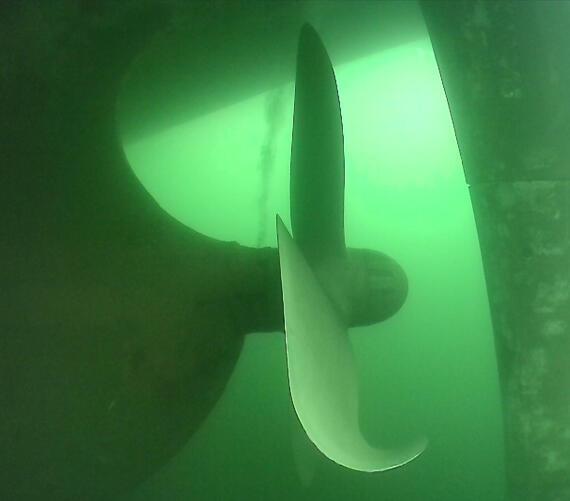
Repairs: In most instances, and if the propeller blades are affected outwards of 0.7- 0.75R (of the blade’s radial span), the most cost / time effective way to deal with such damages is to carry out temporary repairs afloat by symmetrical underwater cropping of all blades at lay-by berth, always subject to severity, propeller Makers’ / Class recommendations and approval. Such temporary repairs would re-instate the propeller balancing, thus mitigating risk of consequential damages to stern tube bearings or M/E, restoring M/E in good working order at continuous rating, thus allowing vessel resuming voyage at normal speed.
Permanent repairs are deferred, until suitable repair facilities options are examined and schedule meets the trading pattern of the vessel, always within the ‘window’ prescribed by the Class (per COC time limit imposed).
It is important to note that the weight balancing of the propeller has to be restored in case of temporary repairs. Thus, if only one blade has been deformed or the deformation of opposite blades is variant, the affected blades cropping has to be symmetrical (removing equal mass quantum on opposite blades) to restore balancing, irrespective if one of the blades may not be affected at all.
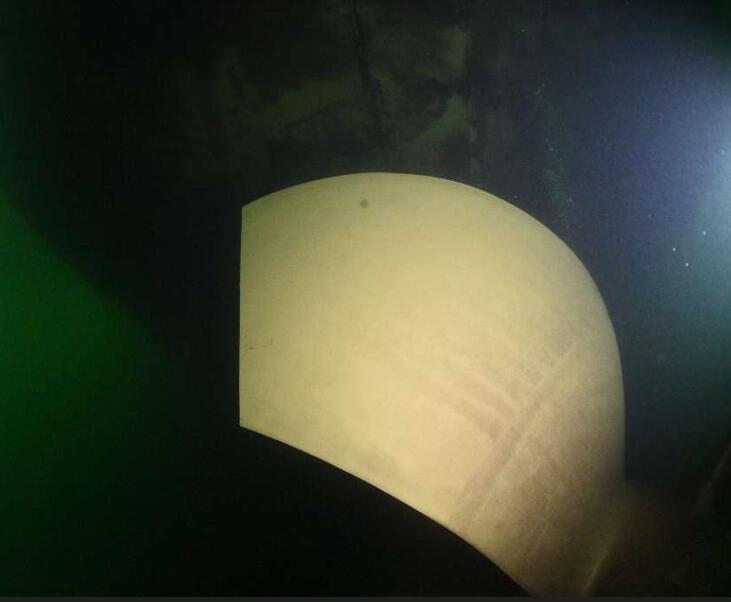
Permanent repairs of the propeller involve welding of new inserts at tips per original dimensions/ material specification, always subject to Class rules and acceptance. The whole process involves drydocking of the vessel, removal of the propeller and transportation to suitable shore facility, with subsequent refitting on completion. The repair time usually varies between 7-10 days, excluding any waiting time for blade tip manufacturing and delivery on-site.
In case dry-docking space is not available, and provided that conditions and vessel’s design permits, the removal / refitting of the propeller may be carried out alongside afloat, with vessel trimmed by the bow.
In case the damage to any blade is more severe and thus beyond permitted permanent repair, propeller renewal is sustained mandatory. In such cases, prompt ordering of a new propeller from Makers is vital to save long delivery times, whilst additional repairs / works are required, such as withdrawal of tailshaft and blue fitting of tailshaft/propeller tapers.
Moreover, forwarding cost / time of a complete propeller from the manufacturers’ works to the place of repair has been proven to be a challenge and costly. All the above, effectively sustain propeller renewal generally a more costly and more time-consuming option than blade tip repairs.
Structural Damage
The second most frequently encountered ice damage is structural, more commonly damage in way of the forward parts of the vessel such as the bulbous bow / FPT or at higher levels if the vessel is in laden condition, sometimes extending to shell plating further aft (in way of Water Ballast tanks / Cargo Holds).
Damage: These damages have almost always a symmetrical nature (P&S) as they occur during vessel’s passage through thick ice formations. The shell plating and internals in way of the FPT and bulbous bow are usually found symmetrically set-in / deformed, and on occasions breached.
Repairs:
Temporary repairs: May be required in case the structural or watertight integrity of the vessel has been compromised. Temporary repairs may include fitting of doubler plates at the breached locations, fitting of additional stiffening / supports internally in the FPT, as well as frequently temporary cement box erection internally for ensuring watertightness of the compartments.
Permanent repairs: Consist of cropping and renewal of all affected steel structure whilst the vessel rests on keel blocks in dry-dock. Prefabrication of bow sections may prove to be the optimum and most cost/time effective practice, always subject to the extent of damage.
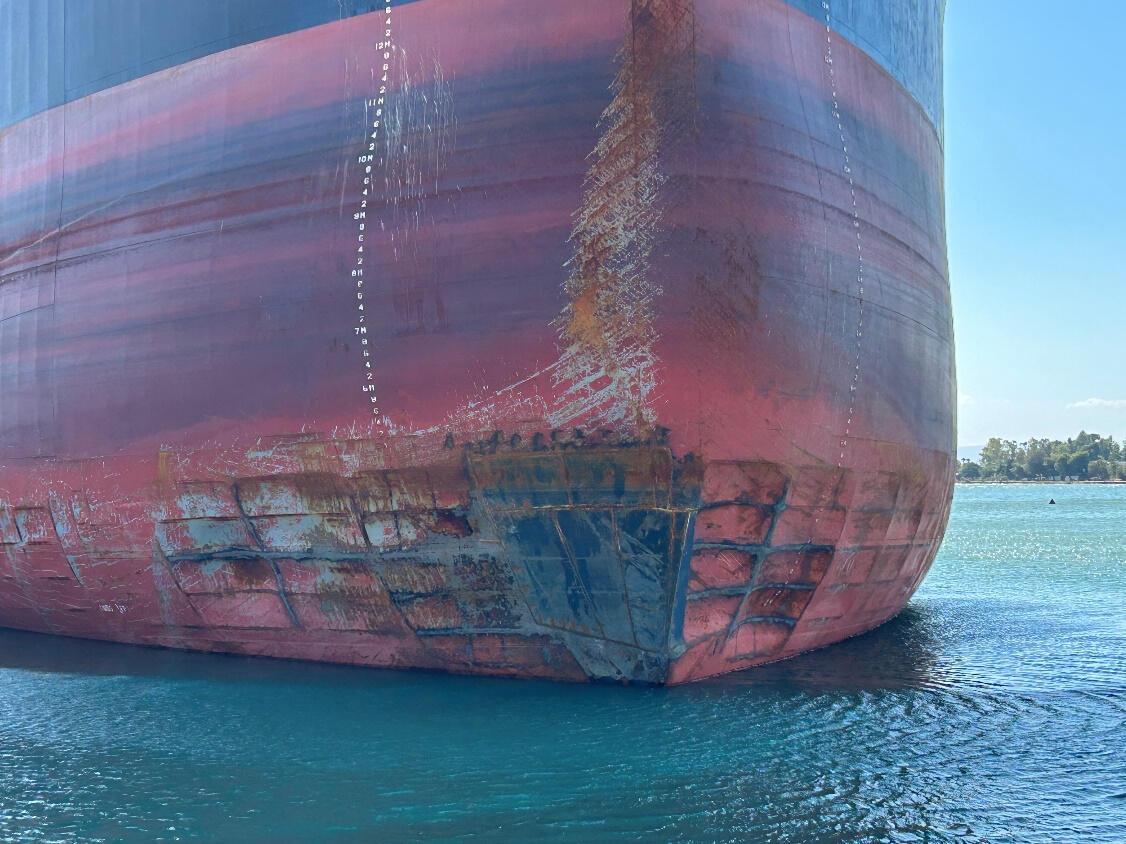
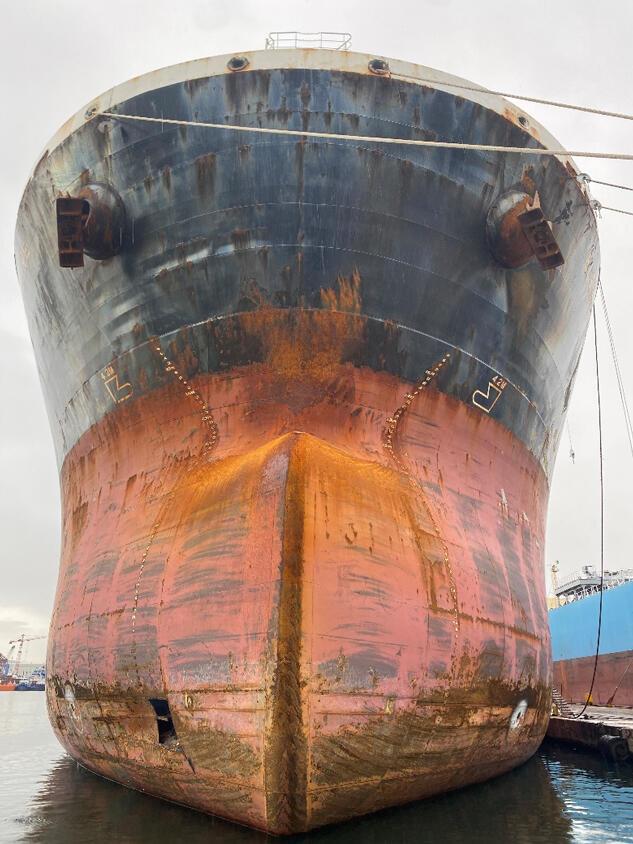
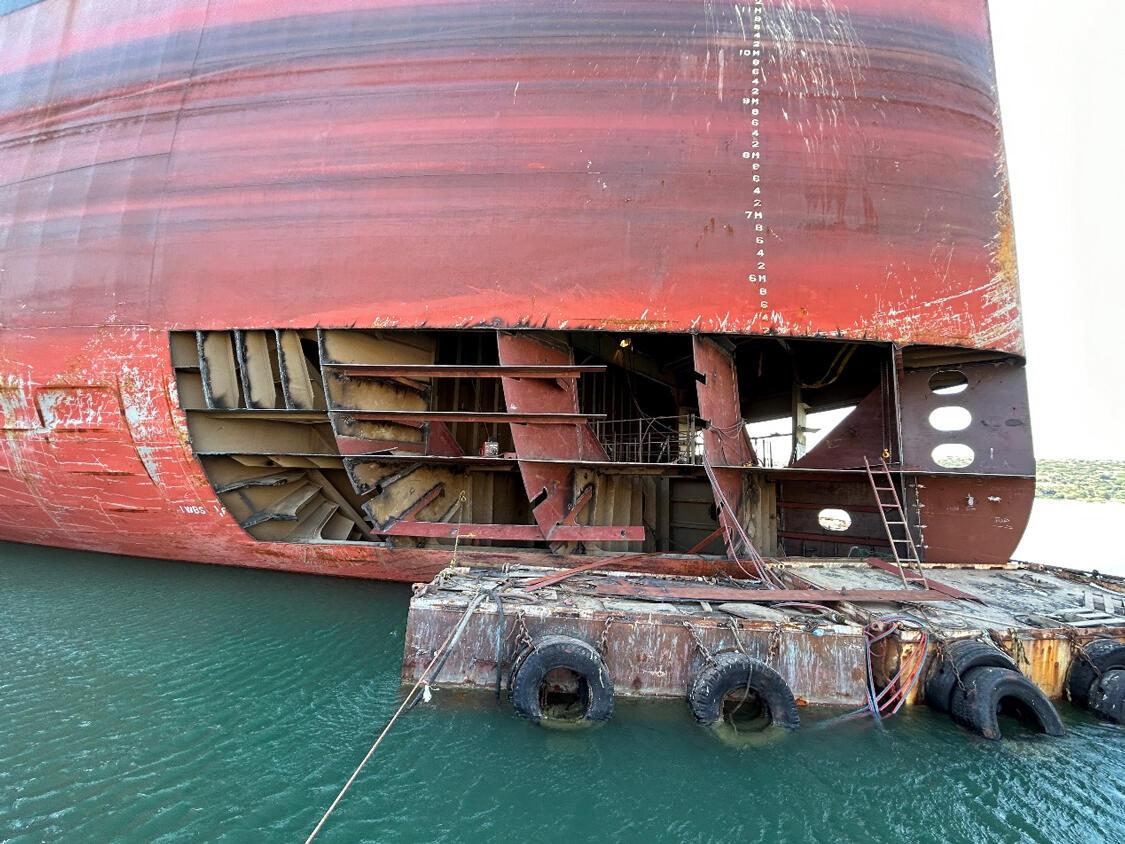
The issue in 2024
An issue faced by vessel managers and consequently insurers this year is the application of sanctions and all repercussions arising in terms of normal trade. It has been observed that vessels with ice damages occurring in St. Petersburg/ North Baltic Sea (after or during loading or discharging) have a difficulty being allowed to enter a different port in the Baltics for usage of a lay-by berth. Based on cases handled this year, the vessels might not even be allowed to enter any port within Europe, depending on the cargo on board.
Vessels in ballast have a better chance, and we have seen vessels steam on own power to ports like Klaipeda or Las Palmas for temporary or permanent repairs.

